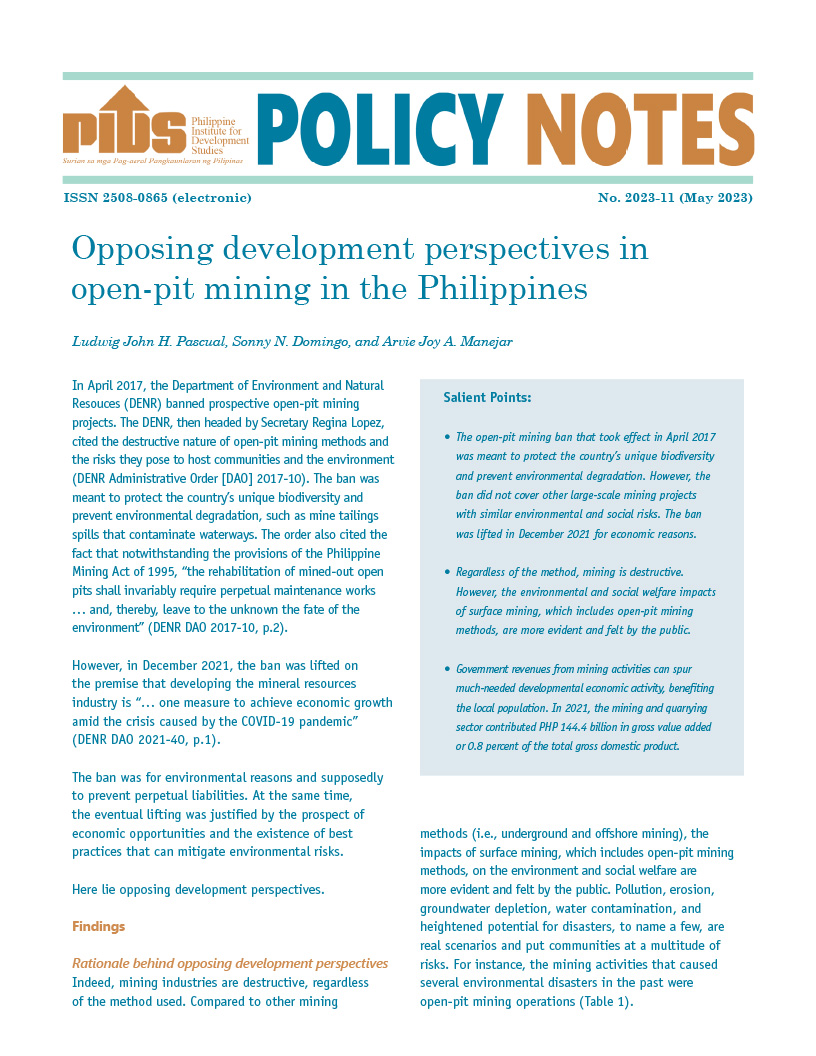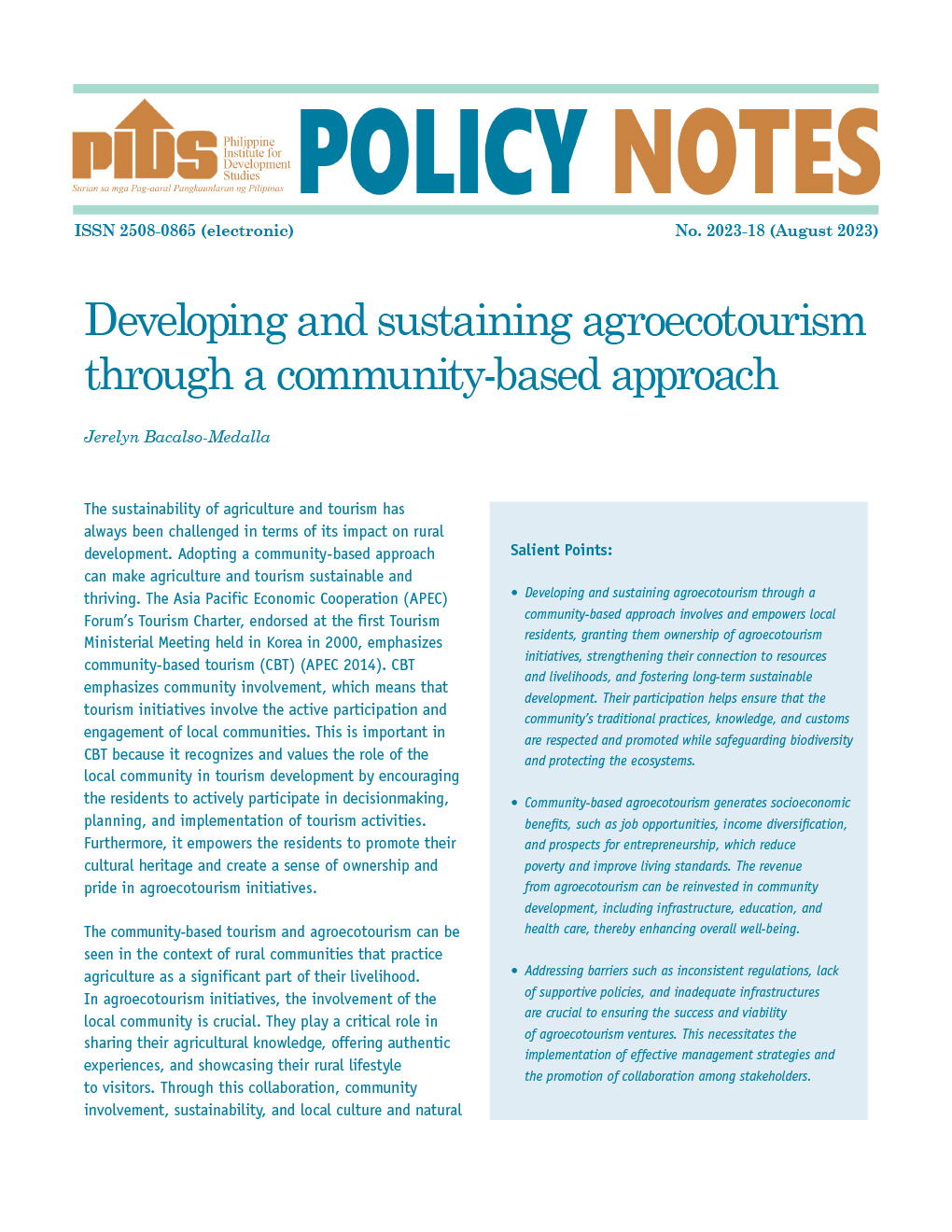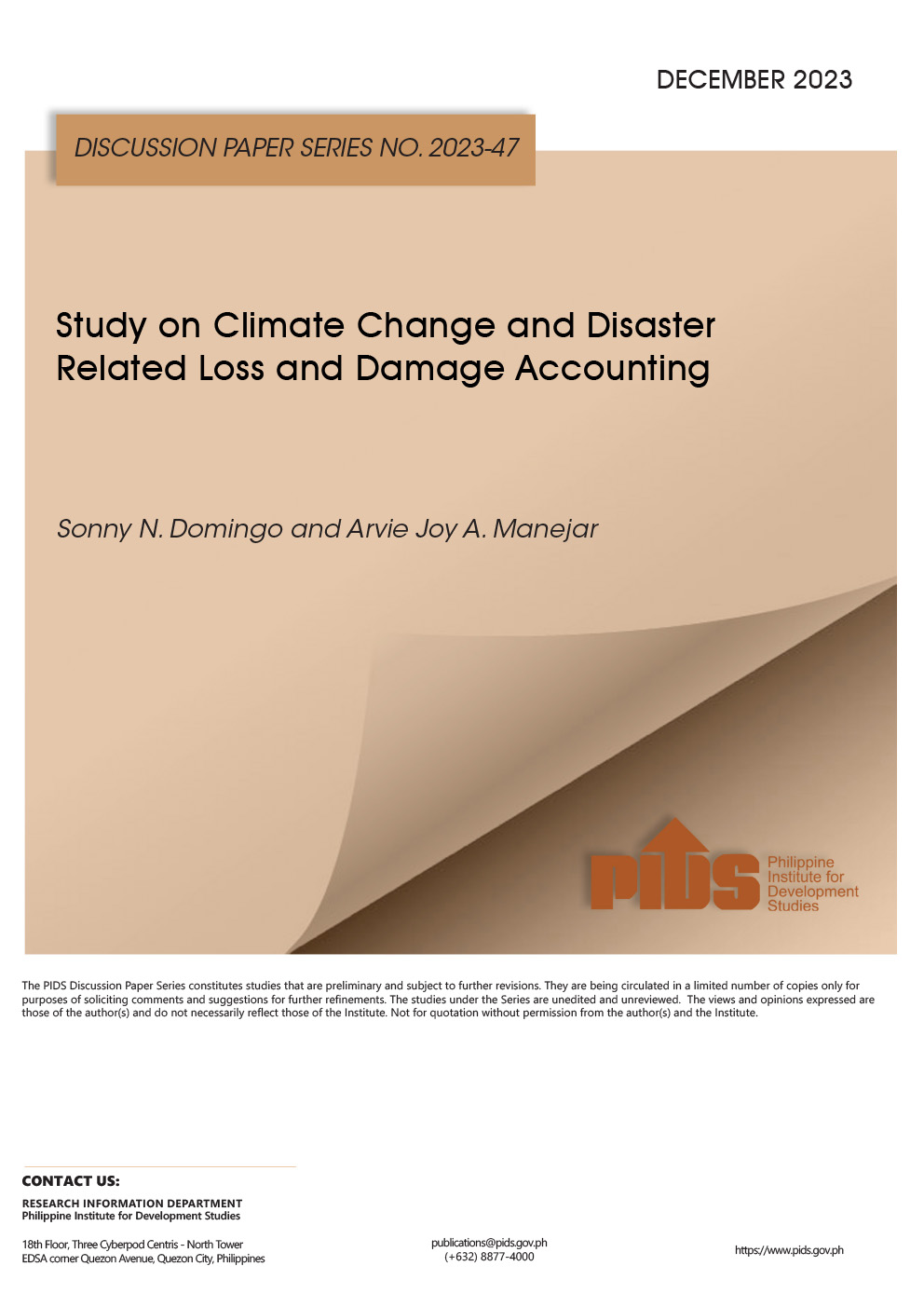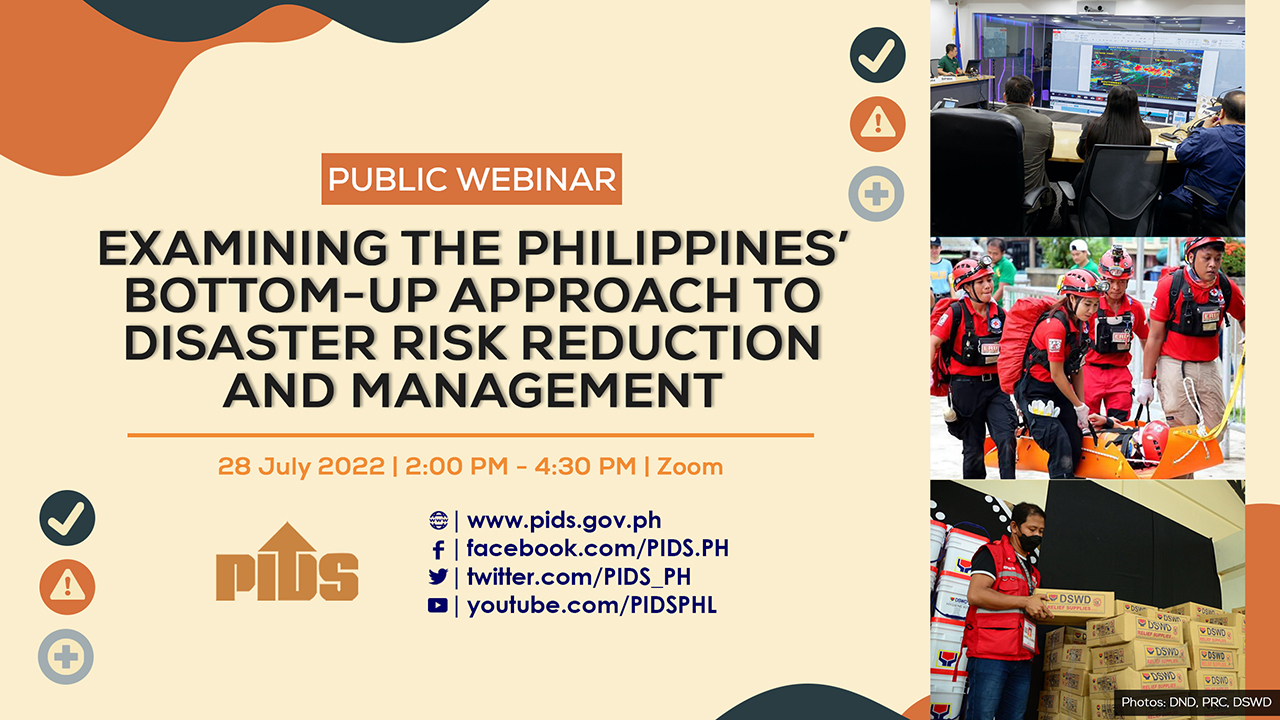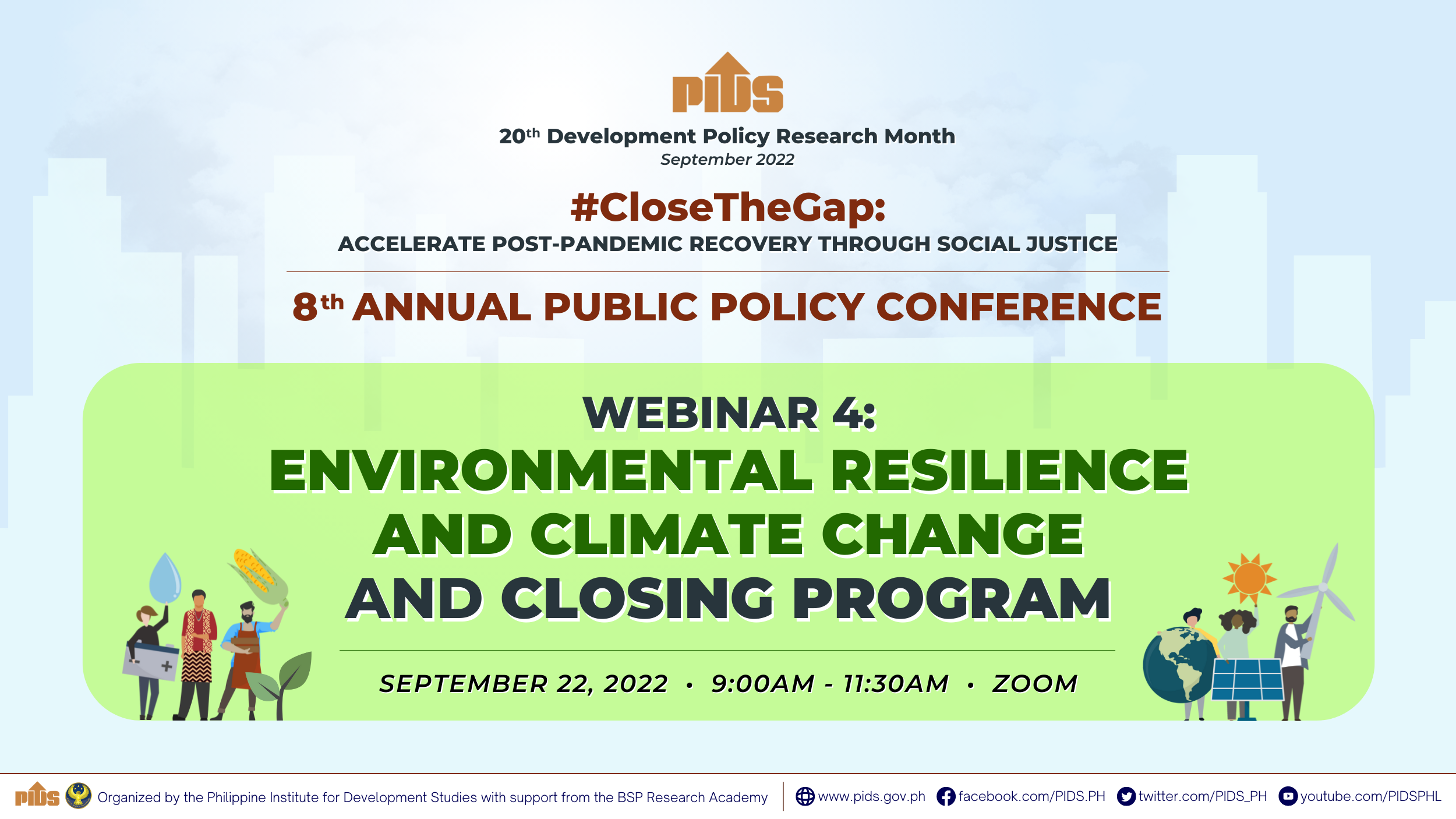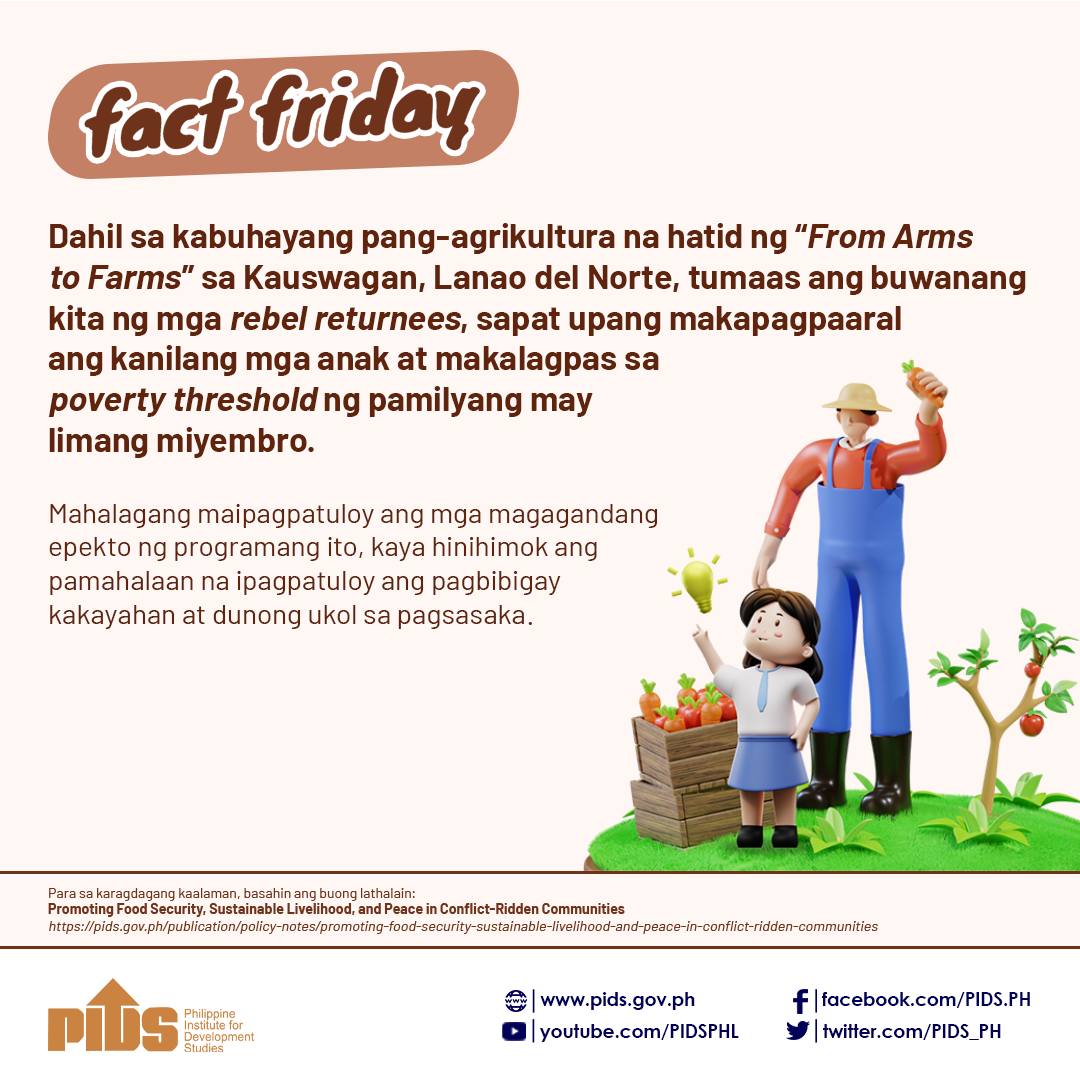
With the onset of prolonged drought brought by the El Nino phenomenon, irrigation also becomes more important for cultivating crops, especially rice. The government has been investing billions of pesos yearly to develop and maintain irrigation systems. However, despite receiving close to half of the total budget for agriculture in recent years, the irrigation sector has consistently fallen short in delivering what is expected from it.
According to a paper by state think tank Philippine Institute for Development Studies (PIDS) that evaluates the effectiveness and efficiency of the government's irrigation program, the underperformance of the irrigation sector has been due mainly to underdevelopment, mismanagement, and environmental degradation.
In her presentation at a forum organized by PIDS and the Central Luzon State University recently in Nueva Ecija, PIDS Consultant and De La Salle University Associate Professor Arlene Inocencio pointed out some basic technical and institutional issues in feasibility studies, project design, implementation and management, as well as rehabilitation that affect both the national irrigation systems (NIS) and the communal irrigation systems (CIS). NIS refer to large gravity irrigation systems covering more than 1,000 hectares while CIS are typically smaller in size.
For example, total irrigated areas in the country has remained low despite new irrigation projects. Inocencio attributed this to poor planning where built-up areas caused by urbanization, areas that are at risk of flooding, elevated areas that require costly re-pumping, and availability or adequacy of water were not taken into account in the estimation of areas that can be irrigated.
Inocencio also observed that most irrigation systems are experiencing technical problems, such as siltation, inadequate water, and faulty control structures, which need medium- to long-term solutions. She noted that the "catch-all" solution of canal lining will not solve these problems.
Another major concern raised by Inocencio is the conversion of irrigated areas in certain regions to nonagricultural uses. "If the rate of land conversion will continue to rise, estimates of design areas should properly take this into account," Inocencio stated.
The PIDS paper enumerates specific interventions and policy changes needed to improve the provision of irrigation in the country, which include the development of a systematic approach to water allocation and distribution, an integrated development plan, and a review of existing policies and regulations that are hampering the growth of the irrigation sector.
"Good governance of irrigation systems must start with a design that ensures compatibility with operational realities and an acceptable level of financial viability to ensure sustainable performance," Inocencio stressed.
To improve operational performance of irrigation systems, Inocencio suggested that government should shift to a new paradigm of interactive and integrated design. "Design concepts such as maintainability, durability, functionality, operability, and safety should be considered in designing a strategy that is consistent with available water supply, irrigation demand, physical design of structures, and realistic operational plan," she stressed.
The study also recommends to the National Irrigation administration (NIA) and other agencies involved in operations and maintenance of irrigation systems to develop an irrigation and water research and development program. For example, the paper suggests that government should establish and provide core funding for water resource centers in universities composed of technical and socioeconomic experts whom the National Economic and Development Authority (NEDA) and the NIA can tap in evaluating irrigation-related projects. "This will strengthen the capacities of NIA, NEDA, and the Department of Agriculture in monitoring and evaluating irrigation projects through the conduct of rigorous and objective analyses to guide their decisions," Inocencio explained.
Inocencio also highlighted the need to clearly define the respective roles of NIA and irrigators associations (IAs) in the irrigation management transfer and to allocate corresponding resources to achieve targets. Under the current setup, NIA delegates partial or full management of irrigation systems to IAs. NIA is allowed to collect irrigation service fees from IAs, with government subsidies for operations and maintenance expenses being gradually phased out and passed on to IAs over a five-year period.
However, majority of IAs do not have the financial capacity to function and be effective. Most IAs are faced with problems of pervasive water theft, members not following the cropping calendar, and most of them still asking for resources for operations and maintenance such as payment for electricity bill.
Based on the IAs surveyed by the research team, it appears that "successful" IAs are characterized as those with adequate water supply, less institutional problems, adequate budget and facilities, machineries, and equipment. "If we take these factors as indicative of necessary requirements for successful IAs, then at the minimum, NIA's system design and service areas should have better estimates of available water," Inocencio said.
Likewise, the issue of equity in the delivery of service remains a major concern given the heavily disadvantaged downstream IAs that are confronted with inadequate water during dry season and more water than they need during wet season. Therefore, Inocencio suggested that NIA should come up with a better strategy to address this aspect of equity as part of improving the quality of irrigation service.
The study, which evaluated 66 CIS and 22 NIS in 16 provinces in Luzon, is part of a research project by PIDS to evaluate the effectiveness and impacts of key government programs and projects. Spearheaded by the NEDA and the Department of Budget and Management (DBM), these impact evaluation (IE) studies were conducted to promote greater transparency and accountability in government. IE is a special type of research that allows policymakers and program implementers to ascertain whether a particular program is achieving its objectives and whether the results are attributable to the intervention. ###
According to a paper by state think tank Philippine Institute for Development Studies (PIDS) that evaluates the effectiveness and efficiency of the government's irrigation program, the underperformance of the irrigation sector has been due mainly to underdevelopment, mismanagement, and environmental degradation.
In her presentation at a forum organized by PIDS and the Central Luzon State University recently in Nueva Ecija, PIDS Consultant and De La Salle University Associate Professor Arlene Inocencio pointed out some basic technical and institutional issues in feasibility studies, project design, implementation and management, as well as rehabilitation that affect both the national irrigation systems (NIS) and the communal irrigation systems (CIS). NIS refer to large gravity irrigation systems covering more than 1,000 hectares while CIS are typically smaller in size.
For example, total irrigated areas in the country has remained low despite new irrigation projects. Inocencio attributed this to poor planning where built-up areas caused by urbanization, areas that are at risk of flooding, elevated areas that require costly re-pumping, and availability or adequacy of water were not taken into account in the estimation of areas that can be irrigated.
Inocencio also observed that most irrigation systems are experiencing technical problems, such as siltation, inadequate water, and faulty control structures, which need medium- to long-term solutions. She noted that the "catch-all" solution of canal lining will not solve these problems.
Another major concern raised by Inocencio is the conversion of irrigated areas in certain regions to nonagricultural uses. "If the rate of land conversion will continue to rise, estimates of design areas should properly take this into account," Inocencio stated.
The PIDS paper enumerates specific interventions and policy changes needed to improve the provision of irrigation in the country, which include the development of a systematic approach to water allocation and distribution, an integrated development plan, and a review of existing policies and regulations that are hampering the growth of the irrigation sector.
"Good governance of irrigation systems must start with a design that ensures compatibility with operational realities and an acceptable level of financial viability to ensure sustainable performance," Inocencio stressed.
To improve operational performance of irrigation systems, Inocencio suggested that government should shift to a new paradigm of interactive and integrated design. "Design concepts such as maintainability, durability, functionality, operability, and safety should be considered in designing a strategy that is consistent with available water supply, irrigation demand, physical design of structures, and realistic operational plan," she stressed.
The study also recommends to the National Irrigation administration (NIA) and other agencies involved in operations and maintenance of irrigation systems to develop an irrigation and water research and development program. For example, the paper suggests that government should establish and provide core funding for water resource centers in universities composed of technical and socioeconomic experts whom the National Economic and Development Authority (NEDA) and the NIA can tap in evaluating irrigation-related projects. "This will strengthen the capacities of NIA, NEDA, and the Department of Agriculture in monitoring and evaluating irrigation projects through the conduct of rigorous and objective analyses to guide their decisions," Inocencio explained.
Inocencio also highlighted the need to clearly define the respective roles of NIA and irrigators associations (IAs) in the irrigation management transfer and to allocate corresponding resources to achieve targets. Under the current setup, NIA delegates partial or full management of irrigation systems to IAs. NIA is allowed to collect irrigation service fees from IAs, with government subsidies for operations and maintenance expenses being gradually phased out and passed on to IAs over a five-year period.
However, majority of IAs do not have the financial capacity to function and be effective. Most IAs are faced with problems of pervasive water theft, members not following the cropping calendar, and most of them still asking for resources for operations and maintenance such as payment for electricity bill.
Based on the IAs surveyed by the research team, it appears that "successful" IAs are characterized as those with adequate water supply, less institutional problems, adequate budget and facilities, machineries, and equipment. "If we take these factors as indicative of necessary requirements for successful IAs, then at the minimum, NIA's system design and service areas should have better estimates of available water," Inocencio said.
Likewise, the issue of equity in the delivery of service remains a major concern given the heavily disadvantaged downstream IAs that are confronted with inadequate water during dry season and more water than they need during wet season. Therefore, Inocencio suggested that NIA should come up with a better strategy to address this aspect of equity as part of improving the quality of irrigation service.
The study, which evaluated 66 CIS and 22 NIS in 16 provinces in Luzon, is part of a research project by PIDS to evaluate the effectiveness and impacts of key government programs and projects. Spearheaded by the NEDA and the Department of Budget and Management (DBM), these impact evaluation (IE) studies were conducted to promote greater transparency and accountability in government. IE is a special type of research that allows policymakers and program implementers to ascertain whether a particular program is achieving its objectives and whether the results are attributable to the intervention. ###

